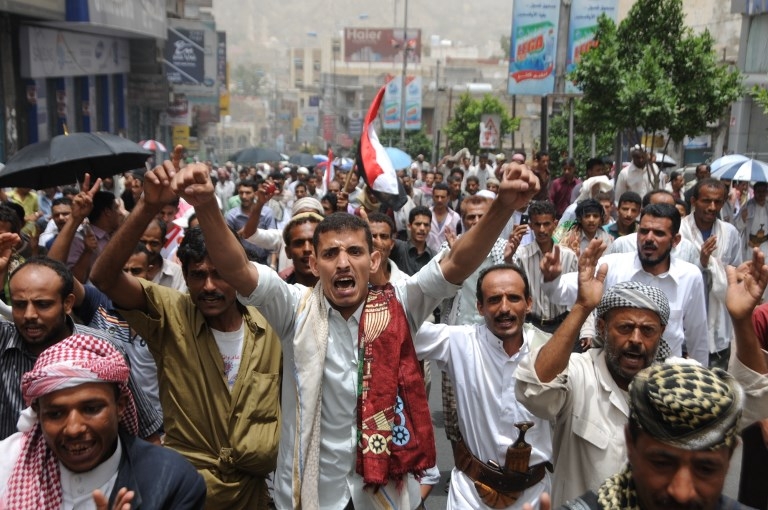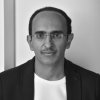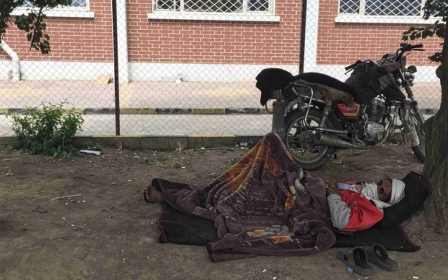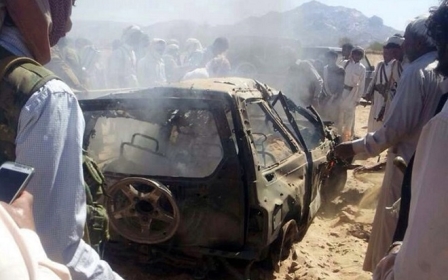The solution for Yemen? Not headlines or humanitarian aid. Think local

It has been two years and nine months since the Houthis – an insurgency in northern Yemen – backed by forces allied to former president Ali Abdullah Saleh took control of the Yemeni capital Sanaa. It has been two years and three months since Saudi Arabia launched its aerial campaign to restore the Yemeni government.
The conflict has resulted in deep polarisation within the Yemeni community. But whatever side you support, most Yemeni people agree that the continuation of the current conflict threatens the very existence of our country.
Humanitarian aid – the lack of it and the need for it – can make a flashy headline, but one that covers up the real problem that lies beyond
According to UN estimates, almost 10,000 people have been killed, 3.1 million people are internally displaced and almost 14.1 million are food insecure.
In April, the UN Office for Coordination of Humanitarian Affairs – OCHA – held a donors conference in Geneva to raise funds for its humanitarian response plan for Yemen. Countries pledged $1.1bn. So far, OCHA says only $605m has been paid.
And when you hear about Yemen in the mainstream media, it is this same angle – the country’s humanitarian crisis, solutions to fix it and failures to fulfil these needs - that you will hear about, in various shapes and forms, over and over again.
Even if Yemen doesn’t always make the headlines, it’s easy to convince the public that Yemenis are in the midst of a dire humanitarian situation and, therefore, in need of donations and food packages. But that doesn’t mean this is good media coverage or that it even helps.
To significantly improve the situation in Yemen, we need complex and nuanced reporting. But given that Yemen is a conflict that doesn’t directly impact Europe or the US, detail is a luxury that editorial meetings and newsrooms apparently cannot afford.
The story of what has happened in Taiz City since 2011 is a good example of the type of local details that journalists, aid organisations and the UN need to understand to better respond to the ongoing crisis in the country.
How details matter in Taiz
In Taiz, there has been ongoing fighting for nearly two years between the Houthis-Saleh forces and local resistance fighters, loyal to Yemeni President Abd Rabbuh Mansour Hadi.
In February 2015, as the Houthis-Saleh forces were advancing south, they took control of the city to secure military access to Aden, which Hadi announced as a temporary capital. But they faced many protests from those trying to prevent their move on Aden.
The story of what has happened in Taiz since 2011 is a good example of the type of local details that journalists, aid organisations and the UN need to better understand
After the Houthis and Saleh forces killed many of the protesters, the situation quickly escalated from an already tense situation into armed confrontation. Taiz turned into a war zone and fighting started in almost every street.
The Yemeni government decided to support the Popular Resistance, especially after Saudi Arabia decided to intervene and back Hadi. In August 2015, the resistance managed to push the Houthis out of the old part of the city in the west. The Houthis are still in control of the eastern part.
After August 2015, Houthi-Saleh forces placed western Taiz under siege, preventing food, water, aid and medical supplies from entering. The situation became so dire that the UN humanitarian chief released a statement condemning the blockade. The entire health system collapsed and only three hospitals in the city remain functioning with very limited capacity.
These measures were supposed to be implemented nationwide before the peace talks. However, the second round concluded, none of the measures were carried out and, in Taiz, the siege continued.
End the siege
The city has been pounded by missiles and, during the third round of peace talks in June 2016, a series of missile attacks led to the death of 60 civilians, according to Watch Team, a group that provides support to civilians in besieged areas of Taiz.
According to Akram el-Shawafi, who is a member of Watch Team and one of the many civilians now trapped in the city and looking for clear answers to how their misery will end, the number of civilian casualties in Taiz alone have exceeded 3,000.
I talked to Akram a couple of weeks ago, soon after the OCHA donors conference in Geneva. He wondered how it was that the UN and the countries who gathered there would actually help end the siege on his city.
Instead of raising money or trying to implement nationwide measures ahead of negotiations, the UN, he emphasised, should focus on ending the siege and mount pressure on the Houthis-Saleh forces to allow access of aid, in order to reach a solution for the country as a whole.
If the UN succeeded in ending the siege in Taiz, it would provide a breakthrough in the peace talks and show the whole the country that the conflict is coming to an end.
The siege and the missiles that continue to fall are not the only problems facing those in Taiz. According to the deputy governor of Taiz, almost 400,000 people still live in the city and public servants haven’t received their salaries for eight months now.
As the siege continues, Akram and his colleagues are receiving support from abroad that they redirect to locals living in Taiz, but they tell me they can’t last forever. Sending food packages won’t solve the crisis.
Finding permanent solutions
Humanitarian aid may provide temporary solutions, but it can’t cover the absence of government. The Yemeni government can claim legitimacy but without paying salaries, it is putting thousands of people in jeopardy.
Lifting the siege and providing salaries are pressing issues that the international community and the Yemeni government can solve. Rather than endless discussions with senior politicians in Geneva, these problems require a bottom-up approach, decentralising programmes and working with local councils.
Taiz is not the only city going through a crisis. In northern Yemen, Saada city has had its share of the current humanitarian crisis. Continuous bombing by the Saudi-led coalition including strikes on markets and hospitals have led to many deaths and forced many people to evacuate their homes.
The problem in Yemen is that local grievances that had been suppressed by the central government for many years have now emerged and it will be hard – if not impossible – for elites in Sanaa to suppress them again. The people of Yemen know this, but the UN, which continues to deal with the crisis at an elite level, does not.
- Baraa Shiban is a Yemeni human rights activist. He is a researcher for the human rights organisation Reprieve and previously served as the organisation's project coordinator in Yemen.
The views expressed in this article belong to the author and do not necessarily reflect the editorial policy of Middle East Eye.
Photo: Yemeni anti-government protesters demand the ousting of President Ali Abdullah Saleh in Taiz in July 2011 (AFP)
This article is available in French on Middle East Eye French edition.
Middle East Eye propose une couverture et une analyse indépendantes et incomparables du Moyen-Orient, de l’Afrique du Nord et d’autres régions du monde. Pour en savoir plus sur la reprise de ce contenu et les frais qui s’appliquent, veuillez remplir ce formulaire [en anglais]. Pour en savoir plus sur MEE, cliquez ici [en anglais].







